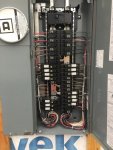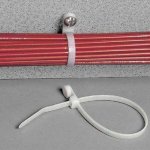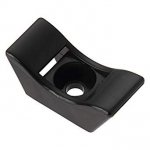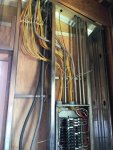Greetings all, this question is mostly for inspectors and or AHJ's but all opinions are welcome,I frequently see PVC male adapters used as a chase nipple to get a ton of romex into the back of a 'trailer' style panel (loadcenter).
It has been discussed on here before that a residential 'loadcenter' falls under article 312.
And we all know later sections of the code may modify more general sections.
I am wondering why more inspectors don't enforce 312.5(C)? Its been in the code a while, first added in the '75 Edition as 373-5(c).
In '99 they added the Exception but it would never cover most of the installations I see.
It has been discussed on here before that a residential 'loadcenter' falls under article 312.
And we all know later sections of the code may modify more general sections.
I am wondering why more inspectors don't enforce 312.5(C)? Its been in the code a while, first added in the '75 Edition as 373-5(c).
In '99 they added the Exception but it would never cover most of the installations I see.







